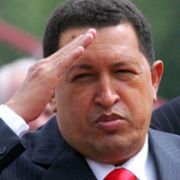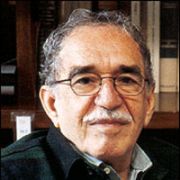-

His Holiness Dalai Lama XIV
The spiritual leader of Buddhists
We can indicate an excess of highly negative tendencies in the contemporary society. There is no reason to be doubt about the increasing numbers of murders and violence from year to year. In addition to this, we constantly hear about the brutality and exploitation, both in the families and in the society, and that more and more young people become addicted to drugs and alcohol. Every single person living in a society prone to such influences. Drug addiction among young Tibetans, simply did not exist a generation ago, and now there are such cases. But I must say, it mainly happened where young people were faced with the modern urban life.
(If you would like to view the full text of the Manifesto or leave a comment, click on the picture) -

Ayatollah Ali Khamenei
The supreme leader of Iran
In the Name of Allah, the most Gracious and Merciful!
Praise to Allah! To the Lord of the worlds' inhabitants! We send our greetings and wishes of peace to our Lord, the Prophet, chosen Muhammad and his pure and holy family.
"One hour of meditation is better than a year of service" - this idea is part of thoughts, when any addresses the inner world, the soul and heart of a man, which reveals the truth and opens the door of wisdom to him. Thus, it is necessary to take advantage of it.
(If you would like to view the full text of the Manifesto or leave a comment, click on the picture) -

Beatrix Wilhelmina Armgard
The Queen of the Netherlands
Alcoholism and drug addiction – is a terrible misfortune. They threaten the health of people around the world. The Executive Board of the Netherlands has always been focusing all their efforts on reducing the problems caused by substance abuse, making emphasis on the prevention of drug abuse, reduction the chances of drug use among the drug addicts and codependents.
Tolerance (in this case, the exemption from criminal liability) is the main focus of Dutch politics. Marijuana and hashish are less harmful to health than hard drugs such as ecstasy and cocaine, but they are also illegal. This means that the sale, manufacture and storage of all drugs in the Netherlands is a criminal offense. However, the Netherlands pursue a policy of tolerance. This means that although the storage and sale of soft drugs are considered to be administrative offense, as a rule, they are not followed by the criminal prosecution.
(If you would like to view the full text of the Manifesto or leave a comment, click on the picture) -

Julia Gillard
Prime minister of Australia
I am glad that there are more and more people, who truly care about the problem of drug addiction, not for the sake of popularity or enrichment, but for our bright future. They are ready to do everything possible to eradicate drug abuse.
Australia has conducted a number of programs aimed at combating drug abuse, preventing and raising public awareness about the deadly dangers of drug usage. One of them is - the National Drug Campaign Australia (NDC), aimed to reduse the motivation of young Australians to use illegal drugs and to provide them with extensive knowledge about the potential negative consequences of it.
(If you would like to view the full text of the Manifesto or leave a comment, click on the picture) -

Alexander Karelin
Deputy of the Russian Federation State Duma (Parliament) Multi-time World Champion in Greco-Roman wrestling
According to my sincere believes, it is impossible to turn one from being allured to use drugs just using statistic data or medical description on the consequences of drug abuse.
-

Empress Michiko
Empress of Japan
1 -

Diego Armando Maradona
Argentine football player
It is a mistake to interfere in a conversation not being aware of what the conversation is about, one especially needs to know the language. There is a special language used in the Internet and social networks. I think the methods of dealing with drug issues need to be in line with the modern developments and what the governments actually need to do first is to learn the language. The governments have to care about the youth from the outside threats, for the rest – there is a family.
Yes, I really think that family bringing up is an important aspect in preventive measures of drug abuse. I am not, however, sure if parents are entirely capable of protecting their child from drugs by only saying that they are dangerous. A family teaches a child for right deeds – this is how children learn to think and analyze their actions. If this is the case, nothing – not even drugs – can endanger their future because they will be able to decide for themselves what they want and can do.
(If you would like to view the full text of the Manifesto or leave a comment, click on the picture) -

Charlize Theron
American model and actress, Oscar winner
Dear friends!
First of all, as a social activist, I want to draw your attention to the problem. Perhaps my speech will be ignored by some people, but I do believe that many still will understand that even tiny step forward can change a life.
Many times in my interviews I have mentioned that my mother was responsible for my recovery. She was always interested in what was happening in my life and was in control of all of its aspects. Yet she always remained my best friend, my “protege”. Whatever was important for my personal development was not even discussed – if I wanted something, this was undoubtedly necessary. Ant yet she was very strict. I am, therefore, grateful for the fact that throughout my life I had a person, who would definitely support me if I lose my balance. Many, however, live without such support.
(If you would like to view the full text of the Manifesto or leave a comment, click on the picture) -

Hugo Chavez
President of Venezuela
Dear fellows!
I prefer to refer to the nation with only good news, because I love them and wish them all the best. But as the leader of my country, I must address unpleasant news as well, since people who are informed – are those, who are prepared to act decisively.
On this day, I want to bring the truth to every resident and citizen of the country about what is happening in the world collapse. Due to the expansionist policies of some countries we are in a difficult situation. We were lying in wait for such hazards as corruption, violence and poverty on a global scale. And all these threats in some way connected with drugs.
(If you would like to view the full text of the Manifesto or leave a comment, click on the picture) -

Gabriel Garcia Marquez
Colombian writer, Nobel Prize winner in Literature in 1982
Citizens of the world!
It upsets me that I should speak to the people of all over the world about the sad and at the same time frightening threat such as drug addiction, but with all my heart I hope that my words will help some vulnerable people to avoid confrontation with this horror.
There is no other world where we could move out, but each of us can contribute to the one we have by all the possible ways that are available, whether by medical activities, political or writing.
One of the social ills that make the world imperfect and in need of change, is drug addiction. Young people try drugs, seeing them as a way to freedom, but the "dependency" and "freedom" – are incompatible concepts. Freedom can only be found within yourself.
(If you would like to view the full text of the Manifesto or leave a comment, click on the picture) -

Fernando Alonso Dias
Spanish racing car-driver, two-time champion of Formula-1 World Series
I feel that information must be provided in a relevant way, so to be properly digested by the users of virtual communities. -

Enrique Martin Morales a.k.a. Ricky Martin
Pop singer
Enrique Martin Morales, better known as Ricky Martin, is a Puerto Rican singer, one of the best-selling Latin American artists, who was awarded Grammy not just once as well as Grammy as Latin American Singer.
Organizer of the ¨Mayaplanet¨project, President of the World League ¨Mind Free of Drugs¨, MD, Professor, Kyrgyzstan
Appeal to participants of the conference
Dear colleagues and friends!
Today we will discuss political and economic aspects of the drug abuse and drug trafficking. Modern world is not synchronized - international markets provide free flow of goods and capital while nation-states regulate them at the regional level, which often creates non-transparency zones.
From 90-th, as a result of corruption and weak governance , independent post-Soviet states have become blind spots with the largest international drug-trafficking route . The result was predictable - after redistribution of power and resources, governments have decided to regulate drug trafficking strictly, mostly because they viewed it as another source of income and the subject of political bargaining.

-
Over 60 percent of admissions to emergency rooms are either directly or indirectly due to drug or alcohol usage.
-
Spirituality can play an important role in treatment and recovery. Meditation, for example, can have the same effect on the brain as an opioid analgesic.
-
The spiritual and religious use of drugs has been occurring since the dawn of our species. Drugs that are considered to have spiritual or religious use are called entheogens. Some religions are based completely on the use of certain drugs. Entheogens are mostly hallucinogens, being either psychedelics or deliriants, but some are also stimulants and sedatives.
-
Drug is thought to originate from Old French "drogue", possibly deriving later into "droge-vate" from Middle Dutch meaning "dry barrels", referring to medicinal plants preserved in them.
-
2009: An Exit Strategy?
So what's next for the War on Drugs? For starters, rebranding. National "drug czar" Gil Kerlikowske, Obama's drug policy coordinator, has called for an end to the War on Drugs terminology, and an attempt to rebrand federal antidrug efforts as simple harm-reduction strategies.
So far, the Obama administration's actual drug policy enforcement has not differed significantly from that of the Bush administration. But the War on Drugs has always been a rhetorical convention--you can't declare war on inanimate objects, social phenomena, moods, or abstractions--and it's a rhetorical convention that has determined the way our country views drug policy enforcement. Acknowledging that this is a policy initiative, not a war, is a good step. -
2001: The Medicine Show
The line between legal and illegal drugs is as narrow as the wording of drug policy legislation. Narcotics are illegal--except when they're not, as when they're processed into prescription drugs. Prescription narcotics can also be illegal if the person in possession of them hasn't been given a prescription. This is precarious, but not necessarily confusing.
What is confusing is the issue of what happens when a state declares that a drug can be made legal with a prescription, and the federal government bullheadedly insists on targeting it as an illegal drug anyway. This happened in 1996 when California legalized marijuana for medical use. The Bush and Obama administrations have arrested California medical marijuana distributors anyway. -
1994: Death and the Kingpin
In recent decades, the U.S. death penalty has been reserved for offenses that involve the taking of another person's life. The U.S. Supreme Court's ruling in Coker v. Georgia (1977) banned capital punishment as a penalty in cases of rape, and while the federal death penalty can be applied in cases of treason or espionage, nobody has been executed for either offense since the electrocution of Julius and Ethel Rosenberg in 1953.
So when Senator Joe Biden's 1994 Omnibus Crime Bill included a provision allowing for the federal execution of drug kingpins, it indicated that the War on Drugs had ultimately reached such a level that drug-related offenses were regarded by the federal government as equivalent to, or worse than, murder and treason. -
1986: Black Cocaine, White Cocaine
Powdered cocaine was the champagne of drugs. It was associated more often with white yuppies than other drugs were in the public imagination--heroin associated more often with African Americans, marijuana with Latinos.
Then along came crack, cocaine processed into little rocks at a price non-yuppies could afford. Newspapers printed breathless accounts of black urban "crack fiends" and the drug of rock stars suddenly grew more sinister to white middle America.
Congress and the Reagan administration responded with the Antidrug Act of 1986, which established a 100:1 ratio for mandatory minimums associated with cocaine. It would take 5,000 grams of powdered "yuppie" cocaine to land you in prison for a minimum 10 years--but only 50 grams of crack. -
1982: "Just Say No"
This isn't to say that law enforcement was the only component of the federal War on Drugs. As drug use among children became more of a national issue, Nancy Reagan toured elementary schools warning students about the danger of illegal drug use. When one fourth-grader at Longfellow Elementary School in Oakland, California asked Mrs. Reagan what she should do if approached by someone offering drugs, Reagan responded: "Just say no." The slogan, and Nancy Reagan's activism on the issue, became central to the administration's antidrug message.
It is not insignificant that the policy also came with political benefits. By portraying drugs as a threat to children, the administration was able to pursue more aggressive federal antidrug legislation. -
1973: Building an Army
Before the 1970s, drug abuse was seen by policymakers primarily as a social disease that could be addressed with treatment. After the 1970s, drug abuse was seen by policymakers primarily as a law enforcement problem that could be addressed with aggressive criminal justice policies.
The addition of the Drug Enforcement Administration (DEA) to the federal law enforcement apparatus in 1973 was a significant step in the direction of a criminal justice approach to drug enforcement. If the federal reforms of the Comprehensive Drug Abuse Prevention and Control Act of 1970 represented the formal declaration of the War on Drugs, the Drug Enforcement Administration became its foot soldiers. -
1971: "Public Enemy Number One"
With passage of the Comprehensive Drug Abuse Prevention and Control Act of 1970, the federal government took a more active role in drug enforcement and drug abuse prevention. Nixon, who called drug abuse "public enemy number one" in a 1971 speech, emphasized treatment at first and used his administration's clout to push for the treatment of drug addicts, particularly heroin addicts.
Nixon also targeted the trendy, psychedelic image of illegal drugs, asking celebrities such as Elvis Presley to help him send the message that drug abuse is unacceptable. Seven years later, Presley himself fell to drug abuse; toxicologists found as many as fourteen legally prescribed drugs, including narcotics, in his system at the time of his death. -
1969: A Borderline Case
To hear mid-20th century U.S. lawmakers tell it, marijuana is a Mexican drug. The term "marijuana" was a Mexican slang term (etymology uncertain) for cannabis, and the proposal to enact a ban during the 1930s was wrapped up in racist anti-Mexican rhetoric.
So when the Nixon administration looked for ways to block the import of marijuana from Mexico, it took the advice of radical nativists: close the border. Operation Intercept imposed strict, punitive searches of traffic along on the U.S.-Mexican border in an effort to force Mexico to crack down on marijuana. The civil liberties implications of this policy are obvious, and it was an unmitigated foreign policy failure, but it demonstrated how far the Nixon administration was prepared to go. -
Marijuana and LSD ARE addictive!
Among persons aged 12 or older who used pain relievers non-medically in the past 12 months, 55.7 percent reported that the source of the drug the most recent time they used was from a friend or relative for free. -
Compared to the total population, alcohol-related motor vehicle fatality rates are particularly high for Native Americans.
-
African Americans, Hispanics, Native Americans, and Alaskan Natives have higher death rates for cirrhosis of the liver relative to the total population.
-
Alcohol mortality rates are highest for African-American men, even though alcohol use tends to be more moderate for African Americans than for whites or Hispanics.
-
African Americans are more likely to report using illegal drugs on a weekly basis than any other ethnic group.
-
Hispanics are most likely to engage in heavy alcohol use, followed by whites and African Americans.
-
Among smokers, whites smoke more cigarettes per day than any other racial or ethnic group. They are also more likely to smoke on a daily basis.
-
Among high school seniors, 36% of whites are heavy alcohol users compared to 29% of Hispanics and 12% of African Americans.
-
Surveys indicate that six to eleven percent of elderly patients admitted to hospitals exhibit symptoms of alcoholism as do 20% of elderly patients in psychiatric wards and 14% of elderly patients in emergency rooms.
-
The prevalence of problem drinking in nursing homes is as high as 49% in some studies. Late onset alcohol problems also occur in some retirement communities, where drinking at social gatherings is often the norm.
-
For American women age 60 and over, substance abuse and addiction to cigarettes, alcohol, and psychoactive prescription drugs are at epidemic levels. One report found that women over 59 are susceptible to abuse and addiction to these substances because they get addicted faster when using smaller amounts than any other group.
-
Drug abuse and drug addiction, according to the National Institute of Health, impacts all Americans, because we all pay the cost for it.
-
Statistics show that drug abuse and drug addiction cost Americans over $484 billion annually. This figure includes healthcare costs (and abuses of that system), lost job wages, traffic accidents, crime and the associated criminal justice system costs.
-
According to the National Highway Traffic Safety Administration, approximately 10 to 22 percent of car crashes involved drivers who have been using drugs.
-
Drug use and addiction is linked to at least half of the major crimes in this country, as at least half of the suspects arrested for violent crimes, such as homicide and assault, were under the influence of drugs when they were arrested.
-
Stress is a major factor in drug use and abuse.
-
Sadly, nearly two-thirds of people in drug abuse treatment report that they were physically or sexually abused as children. Child abuse is a major contributing factor to drug addiction.
-
Marijuana Can Cause Permanent Damage
Because some people with terminal illnesses treat pain with marijuana, this drug has a reputation of being less harmful. But marijuana has many bad effects on the body, including causing learning and memory problems, altering perception of reality, causing clumsiness and increasing the heart rate. Marijuana contains a chemical called THC which inhibits brain function, and can leave permanent or long-lasting effects even after you've stopped smoking it. Because of how it affects the brain, it's also dangerous to drive after smoking pot, just as it is after drinking alcohol.
-
Anabolic Steroids Are Dangerous
People most likely to take anabolic steroids are athletes. Steroids can stunt growth if taken by a teenager, and can cause high blood pressure, high cholesterol, acne and problems with the liver and kidneys. It can cause males to develop breasts, and can make females grow facial hair and go bald.
-
Drugs Affect the Brain
Drugs change the chemistry of the brain, and that is one of the reasons that drugs are addicting. Nicotine, cocaine and marijuana are examples of drugs that cause changes in the brain. Changes in brain chemistry affect how the brain works, which is why drugs are harmful for the brain.
-
Drugs Spead HIV and AIDS
HIV can be spread by intravenous injections, when drug users share needles. This is common knowledge. But it's also true that those who abuse other drugs, drugs that you don't need to use needles to take, can have an increased risk of HIV. This is because drugs and alcohol make you less able to make responsible decisions.
-
Drugs Cause Death
According to Johns Hopkins University, 25 percent of the deaths in the U.S. are caused by alcohol, smoking or illegal drug use.
-
Illegal Drugs Affect the Economy
Some of the economic affects of drug abuse are: health care costs associated with emergency room visits and other health affects of drug abuse; health care costs to treat smoking-related conditions; legal costs and jail expenses for those caught selling illegal drugs; lost work time caused by alcohol abuse. According to Johns Hopkins University, one out of every 14 dollars spent on health care goes to treat a smoking-related condition, and substance abuse costs are estimated at $414 billion every year in the U.S.
-
Young Teens Abuse Inhalants
Inhalants are products that produce fumes that have a harmful effect. Many of these are commonly-found household products such as glues, paints and other chemicals. The largest group to abuse these substances are seventh through ninth graders, according to the National Institute on Drug Abuse.
-
Prescription Drugs Can be Abused
Many people equate drug addiction with illegal drugs and alcohol, but some of the most addicting drugs are prescription medication. People can become addicted to medications their own doctors prescribe for them, they sometimes steal them from parents or other relatives, or they buy them illegally. The National Survey on Drug Use and Health in 2006 found that over 16 million teenagers admitted to trying this kind of drug at least once.
-
Stimulants are Highly Addictive
Stimulants are drugs that put you in a better mood or give you more energy. This type of drug, including cocaine, amphetamines and even nicotine, is highly addicting.
-
In 2009, an estimated 20.4 million Americans aged 12 or older were current (past month) illicit drug users, meaning they had used an illicit drug during the month prior to the survey interview. This estimate represents 8.3 percent of the population aged 12 years old or older. Illicit drugs include marijuana/hashish, cocaine (including crack), heroin, hallucinogens, inhalants, or prescription-type psychotherapeutics used non-medically.
-
In 2009, there were 2.4 million current cocaine users aged 12 or older, which was the same as in 2007 but greater than in 2004 when the number was 2.0 million. However, the rate of current cocaine use remained stable between 2004 and 2009
-
Hallucinogens were used in the past month by 1.0 million persons aged 12 or older in 2009, including 528,000 who had used Ecstasy. These estimates are similar to the corresponding estimates for 2006.
-
There were 7.0 million persons aged 12 or older who used prescription-type psychotherapeutic drugs non-medically in the past month. Of these, 5.2 million used pain relievers, an increase from 4.7 million in 2007.
-
In 2010, there were an estimated 731,000 current users of methamphetamine aged 12 or older.
-
Among youths aged 12 to 17, current illicit drug use rates remained stable from 2008 to 2010. However, youth rates declined significantly between 2004 and 2007 for illicit drugs in general and for several specific drugs, including marijuana, hallucinogens, LSD, Ecstasy, prescription-type drugs used non-medically, pain relievers, tranquilizers, and the use of illicit drugs other than marijuana.
-
The rate of current marijuana use among youths aged 12 to 17 declined from 8.2 percent in 2004 to 6.7 percent in 2009.
-
Among persons aged 12 or older who used pain relievers non-medically in the past 12 months, 55.7 percent reported that the source of the drug the most recent time they used was from a friend or relative for free.
-
In 2009, there were 10.2 million persons aged 12 or older who reported driving under the influence of illicit drugs during the past year.
-
1914: The Opening Salvo
The Supreme Court ruled in 1886 that state governments could not regulate interstate commerce--and the federal government, whose skimpy law enforcement focused mainly on counterfeiting and other crimes against the state, initially did very little to pick up the slack. This changed during the early years of the 20th century, as the invention of automobiles made interstate crime--and investigation of interstate crime--more practicable.
The Pure Food and Drug Act of 1906 targeted toxic drugs, and was expanded to address misleading drug labels in 1912. But the piece of legislation most relevant to the War on Drugs was the Harrison Tax Act of 1914, which restricted the sale of heroin and was quickly used to restrict the sale of cocaine as well.
-
1937: Reefer Madness
By 1937, the FBI had cut its teeth on Depression-era gangsters and achieved some level of national prestige. Prohibition had ended, and meaningful federal health regulation was about to come about under the Food, Drug, and Cosmetics Act of 1938. The Federal Bureau of Narcotics, operating under the U.S. Treasury Department, had come into existence in 1930 under the leadership of Harry Anslinger.
And into this new national enforcement framework came the Marihuana Tax Act of 1937, which attempted to tax marijuana into oblivion Marijuana had not been shown to be dangerous, but the perception that it might be a "gateway drug" for heroin users--and its alleged popularity among Mexican-American immigrants--made it an easy target. -
1954: Eisenhower's War
General Dwight D. Eisenhower was elected president in 1952 by an electoral landslide based largely on his leadership during World War II. But it was his administration, as much as any other, that also defined the parameters of the War on Drugs.
Not that it did so alone. The Boggs Act of 1951 had already established mandatory minimum federal sentences for possession of marijuana, cocaine, and opiates, and a committee led by Senator Price Daniel called that the federal penalties be increased further, as they were with the Narcotic Control Act of 1956.
But it was Eisenhower's establishment of the U.S. Interdepartmental Committee on Narcotics, in 1954, in which a sitting president first literally called for a war on drugs. -
Opium’s Place in Drug Abuse History
When the Ming Dynasty of China placed a ban on the smoking of tobacco in the 17th century, the country began a long “love affair” with opium. Opium abuse and addiction remained a problem in the country for centuries. Throughout the 18th and 19th centuries, China struggled with widespread opium addiction, and when many Chinese immigrants moved to other countries (including the United States) they brought the drug with them – thus paving the way for the smuggling routes that continue to this day. -
Alcohol is the most widely used drug in America. It is the third largest cause of death in the United States, second only to heart disease and cancer. Alcohol and tobacco use are a significant "risk factor" in heart disease and cancer. It accounts for over 100,000 deaths per year in this country alone. It is also the leading cause of death for people between the ages of 15 and 24.



















































































